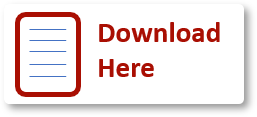ELEVATING STUDENTS’ READING COMPREHENSION IN NARRATIVE TEXT THROUGH STORY MAPPING AT THE TENTH GRADE OF SMK N 1 TERBANGGI BESAR
Abstract
This study aims to find out how far the story mapping can improve students' reading comprehension in narrative text and the implementation of story mapping in teaching reading in narrative texts to the tenth-grade students of SMK N 1 Terbanggi Besar. Classroom action research was used by the researchers in this study. There were 30 students from class X PM 1 SMK N 1 Terbanggi Basar. This study used a test and non-test as data collection techniques. The reading test was used to see the progress of students’ reading comprehension. Then, observation was used to see the implementation of story mapping in the classroom. Data analisys shows an improvement between the mean pre-test score that was 50.23 and the post-test 1 in cycle 1 that is 56.23. While in post-test 2 the score improved to 79.43 in cycle 2. Then the result of observation showed that students were more active and enthusiastic in learning narrative texts using story mapping. From the results of the two instruments, it can be concluded that the story mapping technique can significantly elevate students’ reading comprehension of narrative texts.
Keywords: Story mapping, narrtive text, reading skillFull Text:
PDFReferences
Amalia, R. (2017). The effectiveness of Using Story Mapping Technique on Stidents’ Reading Comprehension of Narrative Text. Syarif Hidayatullah State Islamic University.
Anggraeyni, F., Salam, U., & Suhartono, L. (2015). Improving Students' Reading Comprehension inFinding Elements Story Through Story Mapping Strategy. Jurnal Pendidikan dan Pembelajaran, 4 (3), 1-8.
Dhoruri, A. (2017). Penelitian Tindakan Kelas (Classroom Action Research). Retrieved on November, 22nd, 5-6.
Fitria, T. (2019). The Effectiveness of Using Story Mapping Technique on Students’ Reading Comprehension (An Experimental study at Tenth Grade Students of SMA Negeri 1 Sokaraja in Academic Year 2018/2019) (Doctoral dissertation, Universitas Muhammadiyah Purwokerto).
Gilakjani, P. A. (2016). How can Students Improve Their Reading Comprehension Skill?. Journal of Studies in Education, 6 (2), 229-240
Grünke, Matthias., Wilbert, Jurgen., & Stegeman, Kim Calder., (2013). Analyzing the Effects of Story Mapping on the Reading Comprehension of Children with Low Intellectual Abilities, Learning Disabilities: A Contemporary Journal 11(2), 51-64..
Hatimah, H. (2021). Improving Students' Reading Comprehension on Narrative Text by Using Story Mapping Technique at Senior High Schools in Luwu Utara (Doctoral dissertation, Institut Agama Islam Negeri Palopo),1-55.
Indonesian EFL Learners. Journal of Arts, Science & Commerce, 8(2), 14-27.
Jismulatif, S. F. (2019). An Analysis of Learners’ Reading Experience Developing Reading Interest. Proceeding of the URL International Conference on Educational Sciences.
Kader, F., A., H., A., & Eissa, M.A. (2016). The Effectiveness of Story Mapping on Reading Comprehension Skills of Children with ADHD, International Journal of Psycho-Educational Science 5(1), 3-9
Kurniawan, A. K., Rufinus, A., & Suhartono, S. (2013). Improving Students Reading Comprehension on Narrative Text Through Story Mapping Strategy. Jurnal Pendidikan dan Pembelajaran Untan, 2(5), 1-13.
Lems, K, et.al., (2010). Teaching Reading to English Language Learners: Insights from Linguistics. New York: The Gilford Press
Lewin, L. (2003). Paving the Way in Reading and Writing. San Francisco: Jossey Bass a Willey Imprint.
Nurpitriyani, D. (2015). The Effectiveness of Story Mapping Technique toward Students' Reading Comprehension of Narrative Text, 1-67
Nuttal, C. (2000). Teaching Reading Skills in the Foreign Language. Oxford: Macmillan Publishers Limited.
Puspita, A. (2017). Students’ Difficulties In Comprehending English Reading Text At Second Grade Students Of Sma N 2 Metro. The Language and Arts Department of Teacher Training and Education Faculty. A Script.
Shanahan, T., Callison, K., Carriere, C., Duke, N. K., Pearson, P. D., Schatschneider, C., & Torgesen, J., (2010). Improving Reading Comprehension in Kindergarten Through 3rd Grade: A Practice Guide, Washington, DC: National Center for Education Evaluation and Regional Assistance.
Sholichah, N. I. (2017). The Effect of Story Mapping on Reading Comprehension. Jurnal Penelitian Ilmiah Intaj, 1(1), 29-48.
Snow, C. (2002). Reading for Understanding: Toward An R&D Program in Reading Comprehension. Washington DC: Rand Corporation.
Sundari., Zulaikah., & Andriani, D. (2019). Story Mapping Strategy to Teach Reading Comprehension Achievement. English Language Education and Literature, 4(2), 50-55.
Supramaniam, E., & Zainal, Z. (2014). The Effect of Semantic Mapping on Reading Comprehension. LSP International Journal, (1) 61-74
Syafii, M. L. (2021). The Implementation of the Story Mapping Strategy to Enhance Students’ Reading Comprehension. Celtic: A Journal of Culture, English Language Teaching, Literature and Linguistics, 8(1), 1-21.
Taqwani, W. (2020). Penerapan Model Pembelajaran Inquiry Training untuk Meningkatkan Hasil Belajar Siswa pada Materi Text Narrative. Jurnal Kinerja Kependidikan (JKK), 2(3), 483-496.
Weda, S., & Sakti, A. E. (2017). The Effects of Formal Instruction on The Acquisition of English Fricative Consonants of Indonesian EFL Learners. Journal of Arts, Science & Commerce, 8(2), 14- 27.
DOI: https://doi.org/10.33365/jeltl.v4i2.3321
Refbacks
- There are currently no refbacks.
The articles published in Journal of English Language Teaching and Learning are licensed under a Creative Commons Attribution-ShareAlike 4.0 International License 
Copyright © 2020 Journal of English Language Teaching and Learning
English Education Study Program, Faculty of Arts and Education.
Universitas Teknokrat Indonesia
All rights reserved.





2.png)
1.png)

